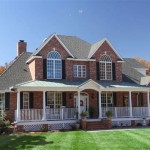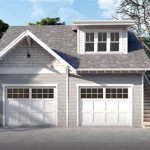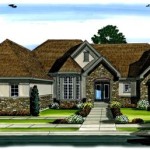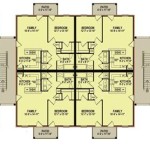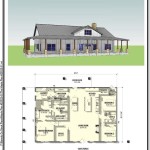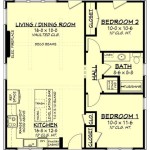Big Family House Floor Plans: Designing for Space and Connection
Designing a house for a large family presents unique challenges and opportunities. The need for ample living space, private retreats, and functional areas for both individual activities and family togetherness requires careful consideration of floor plan layouts. This article explores key aspects of big family house floor plans, highlighting design strategies that promote comfortable living and foster a strong sense of community.
Prioritizing Open-Concept Living Spaces
Open-concept floor plans have become increasingly popular in modern home design, and they are particularly well-suited for large families. By combining the kitchen, dining area, and living room into a single, expansive space, these layouts facilitate interaction and supervision. Parents can easily monitor children playing while preparing meals, and family members can engage in various activities without feeling isolated. The elimination of walls also creates a more visually spacious environment, which is crucial in a home occupied by numerous individuals.
However, it is important to incorporate zoning within the open-concept design. This can be achieved through the strategic placement of furniture, changes in flooring materials, or the inclusion of subtle architectural elements such as partial walls or columns. These techniques help to define distinct areas within the larger space, providing a sense of order and functionality. For example, a rug can delineate the living room area, while a kitchen island can serve as a natural barrier between the cooking and dining zones.
The size of the open-concept area should be carefully considered in relation to the overall dimensions of the house and the number of family members. An excessively large space can feel impersonal and difficult to manage, while a space that is too small can become overcrowded. A balance must be struck to ensure that the open-concept area is both functional and inviting.
Adequate lighting is also crucial in open-concept living spaces. Natural light should be maximized through the use of large windows and skylights. Artificial lighting should be layered, with a combination of ambient, task, and accent lighting to create a comfortable and versatile environment. Dimmers can be used to adjust the lighting levels according to the time of day and the specific activity taking place.
Creating Dedicated Bedrooms and Bathrooms
In a big family home, privacy and personal space are paramount. Each family member should have a dedicated bedroom that provides a sanctuary for rest, relaxation, and individual pursuits. The size of the bedrooms should be adequate to accommodate a bed, desk, and storage space. Thoughtful placement of windows and closets can maximize the usable area and create a more comfortable environment.
The number of bathrooms is another important consideration. Minimizing morning congestion requires enough bathrooms for the number of residents. Consider multiple sinks or a separate toilet and shower area within a larger bathroom to accommodate multiple users simultaneously. Master suites should include a private bathroom with amenities such as a walk-in shower, soaking tub, and double vanity.
When designing children's bedrooms, consider the possibility of shared rooms, especially for younger siblings. Shared rooms can foster a sense of camaraderie and reduce the overall square footage required for bedrooms. However, it is essential to provide adequate storage and personal space for each child to avoid conflicts and maintain a sense of individuality. Bunk beds, individual desks, and partitioned storage units can help to achieve this balance.
Accessibility is another important factor to consider when designing bedrooms and bathrooms. If any family members have mobility limitations, these spaces should be designed to be easily accessible with features such as wider doorways, grab bars, and roll-in showers. Even if accessibility is not a current need, it is wise to incorporate universal design principles into the floor plan to ensure that the home remains functional and adaptable as the family's needs evolve over time.
Incorporating Functional and Flexible Spaces
Beyond the essential living areas, bedrooms, and bathrooms, big family homes benefit from additional spaces that serve specific functions and offer flexibility to adapt to changing needs. A mudroom, located near the main entrance, provides a convenient space to store shoes, coats, backpacks, and other outdoor gear, helping to keep the rest of the house clean and organized. A laundry room should be located in a convenient area of the house, preferably near the bedrooms or bathrooms. Ample counter space and storage are essential for efficient laundry management.
A dedicated home office or study area is becoming increasingly important, especially with the rise of remote work and online learning. This space should be quiet and private, with adequate lighting and ventilation. A large table or desk can accommodate multiple users, and built-in bookshelves can provide ample storage for books and files. Consider soundproofing the walls and door to minimize distractions.
Recreation and entertainment spaces are also important for big families. A playroom for children can provide a safe and stimulating environment for play and learning. A media room or home theater can provide a space for family movie nights and other entertainment activities. A game room with a pool table, ping pong table, or other games can provide opportunities for recreation and social interaction.
Flex spaces, which can be adapted to serve different functions over time, are particularly valuable in big family homes. A spare bedroom can be used as a guest room, home gym, or hobby room. A finished basement can be used as a recreation room, home theater, or additional living space. By incorporating flex spaces into the floor plan, families can ensure that their home remains functional and adaptable as their needs evolve over time.
Storage solutions are also critical in a large family home. Walk-in closets, built-in shelving, and attic or basement storage can help to keep clutter to a minimum. Consider vertical storage solutions, such as tall cabinets and shelving units, to maximize the use of available space. Regular decluttering and organization are also essential for maintaining a functional and comfortable living environment.
Outdoor living spaces can also enhance the functionality and enjoyment of a big family home. A spacious patio or deck can provide a place for outdoor dining, relaxation, and entertainment. A backyard playground can provide a safe and stimulating environment for children to play. A garden can provide opportunities for gardening and outdoor recreation. Consider incorporating features such as a covered porch, outdoor kitchen, or fire pit to extend the usability of the outdoor living spaces throughout the year.
The design of a big family house floor plan is a complex process that requires careful consideration of numerous factors. By prioritizing open-concept living spaces, creating dedicated bedrooms and bathrooms, and incorporating functional and flexible spaces, families can create a home that is both comfortable and functional, fostering a strong sense of community and accommodating the diverse needs of all family members.

Unique Two Story House Plan Floor Plans For Large 2 Homes Desi Family Blueprints Victorian

Spacious And Open Best Floor Plans For Families Blog Homeplans Com

Floor Plan Friday Big Family Home House Plans Dream New

Large Family Style Home Design House Plan

Spacious And Open Best Floor Plans For Families Blog Homeplans Com

8 Fabulous Family Home Plans Blog Dreamhomesource Com

Floor Plan Friday Huge Family Home With Library Or 5th Bedroom

Spacious And Open Best Floor Plans For Families Blog Homeplans Com

Looking For House Plans With Extended Family Options Houseplans Blog Com

Large House Plans 4 Bedroom Home

